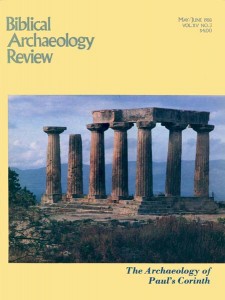
“The city of Corinth was always great and wealthy, and it was well equipped with men skilled both in the affairs of state and in the craftsman’s art.” So wrote Roman historian and geographer Strabo about 7 B.C. About 50 A.D., when the apostle Paul arrived in Corinth on the isthmus connecting mainland Greece with the Peloponnese, he found a prosperous commercial city undergoing major remodeling by expert architects, builders and artisans. The elaborate, elegant remains of Roman Corinth and of the Greek city that preceded it have been revealed by nearly 100 years of careful excavation. In “Corinth in Paul’s Time—What Can Archaeology Tell Us?” Victor Paul Furnish displays the roads, shops, temples and artifacts that Paul saw and explains how they help us to understand better what Paul said and how he lived.
Furnish is University Distinguished Professor of New Testament at Southern Methodist University’s Perkins School of Theology. An authority on the apostle who took his preaching to Corinth, Furnish has written The Moral Teaching of Paul: Selected Issues (Abingdon, 1985), The Pauline Letters (with L. Keck, Abingdon, 1984) (see the review in the April issue of our sister publication, Bible Review) and II Corinthians (Doubleday, 1984), which won the BAS 1986 Publication Award for Best Commentary on a Book of the New Testament.
Already a library member? Log in here.
Institution user? Log in with your IP address.

